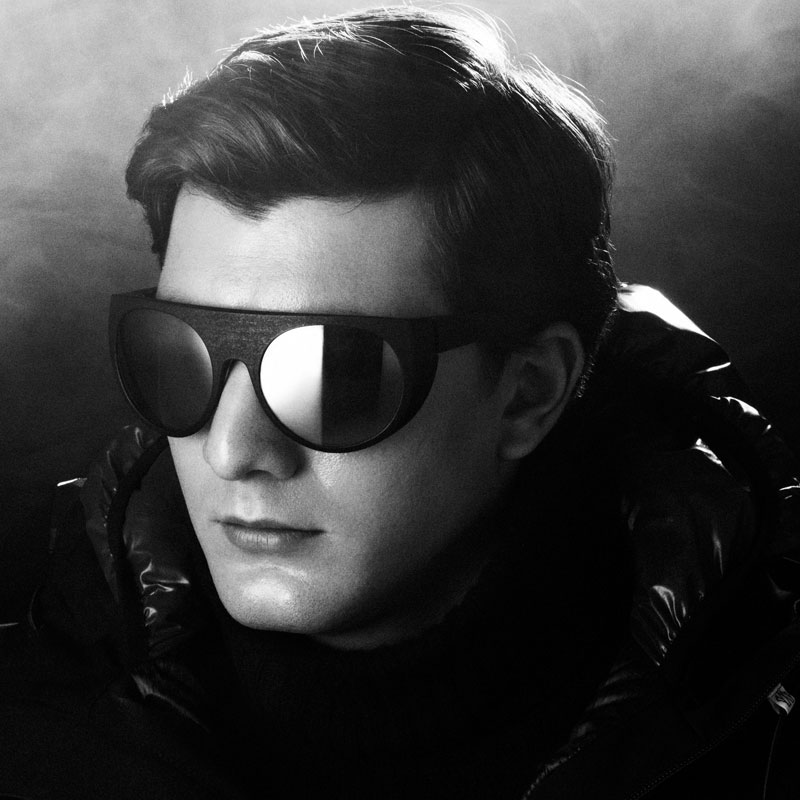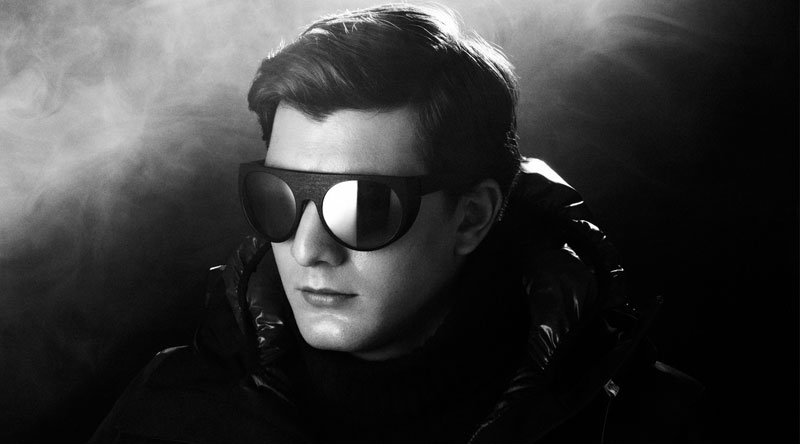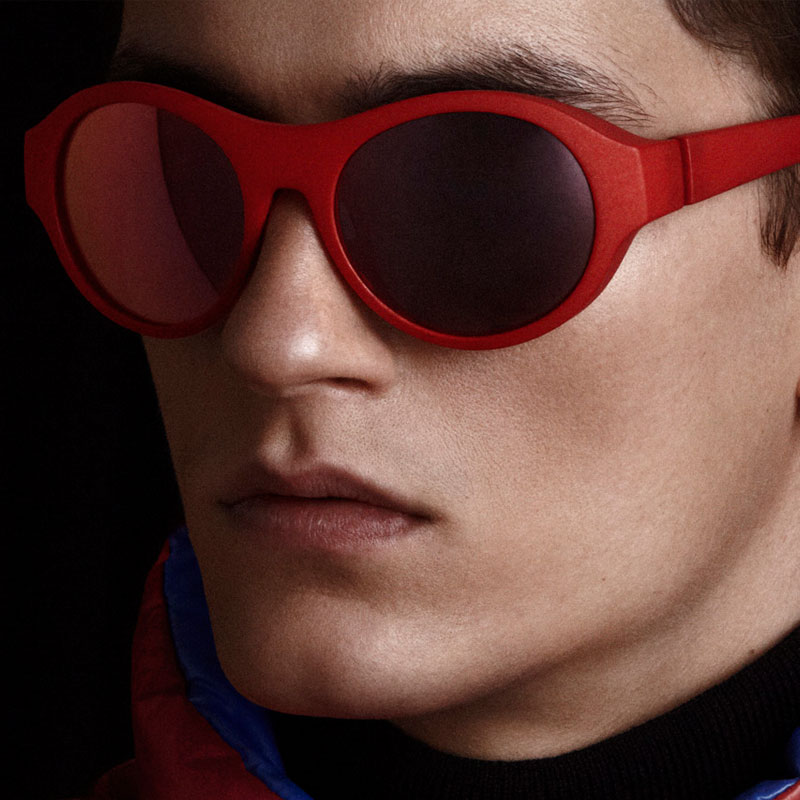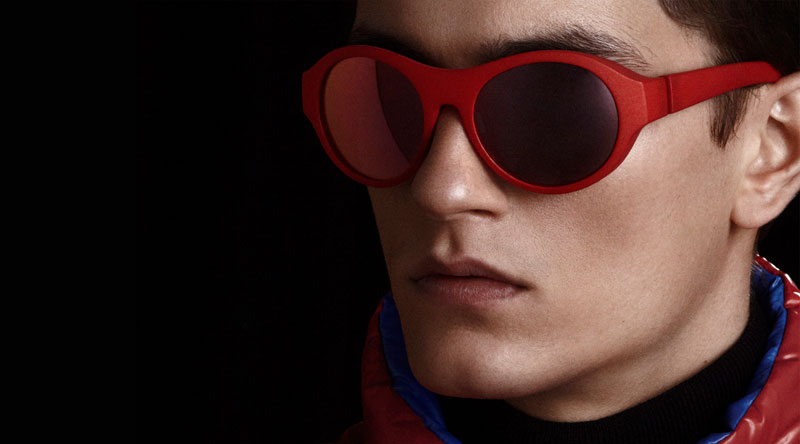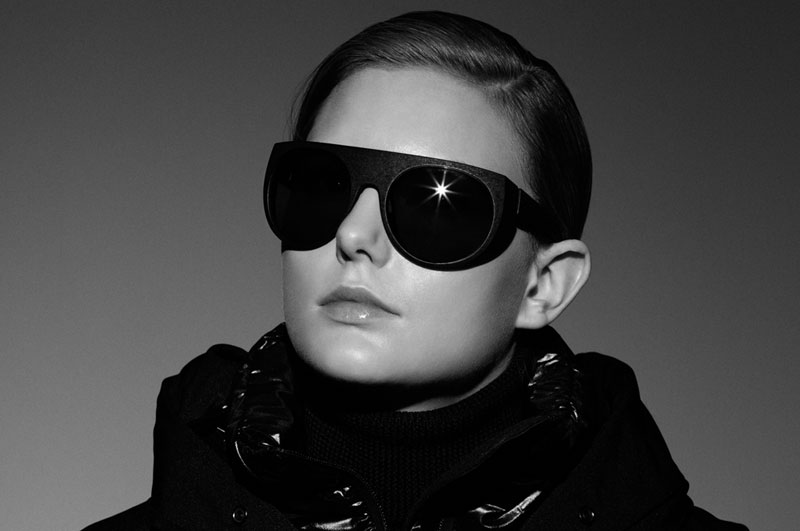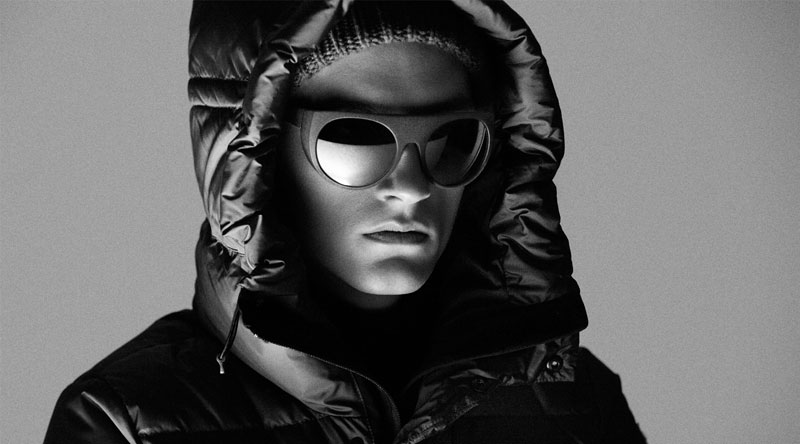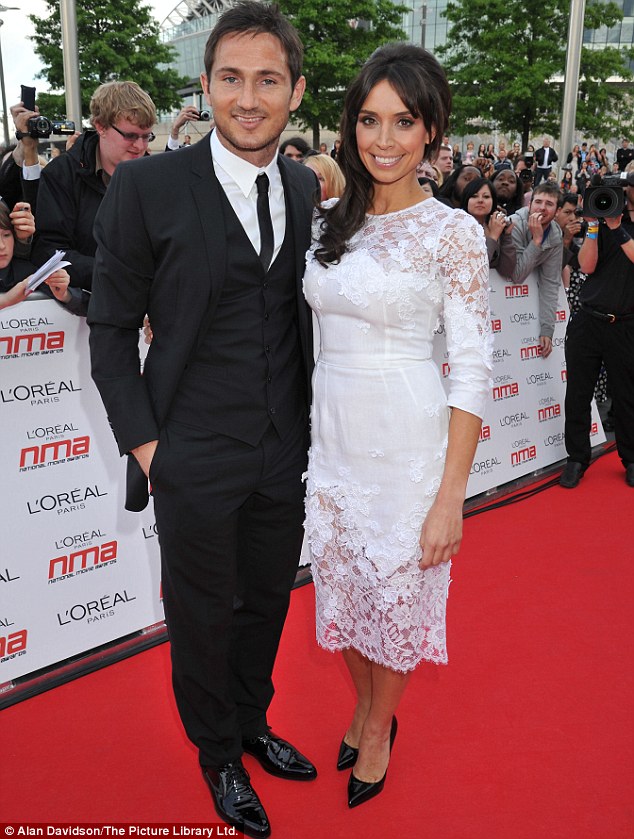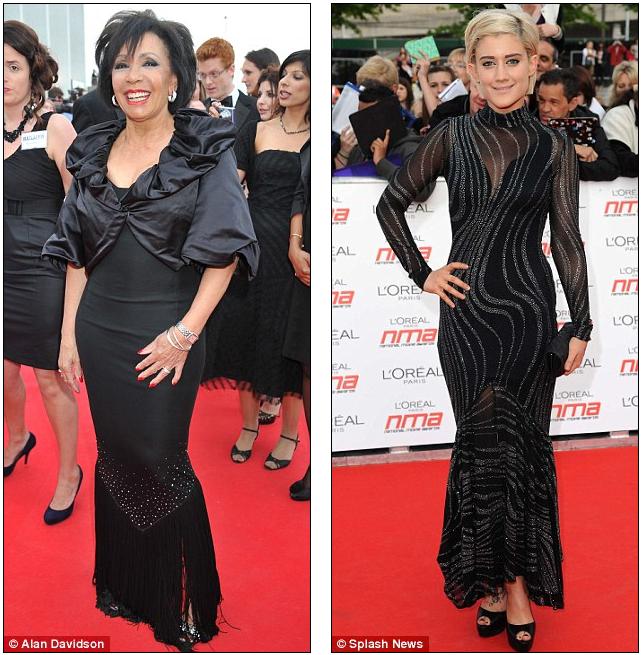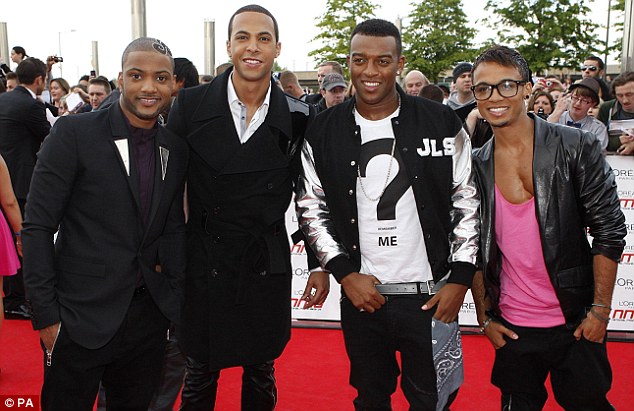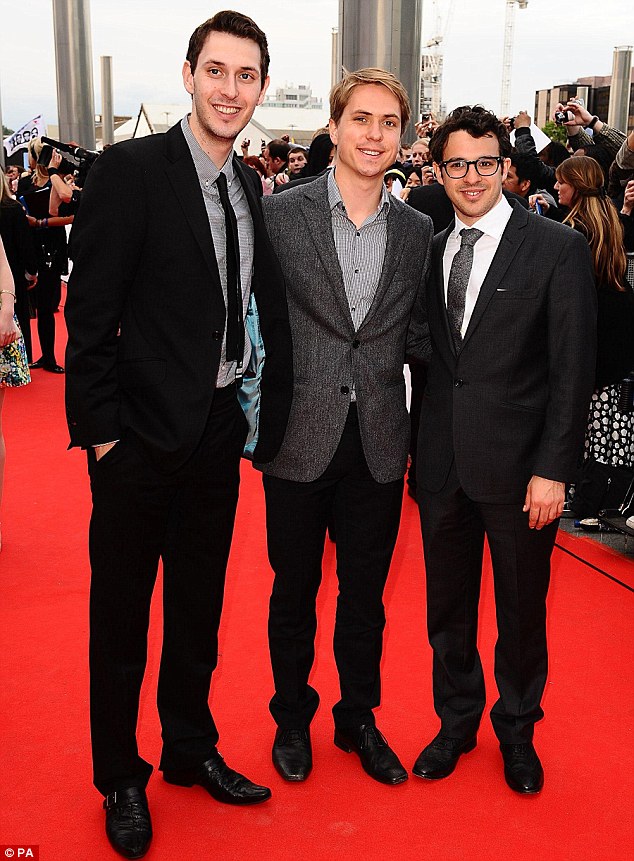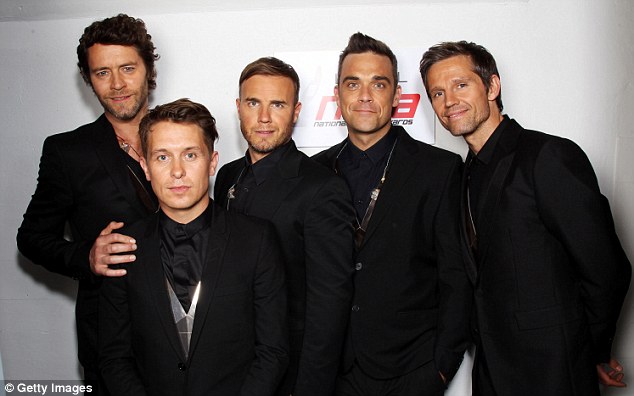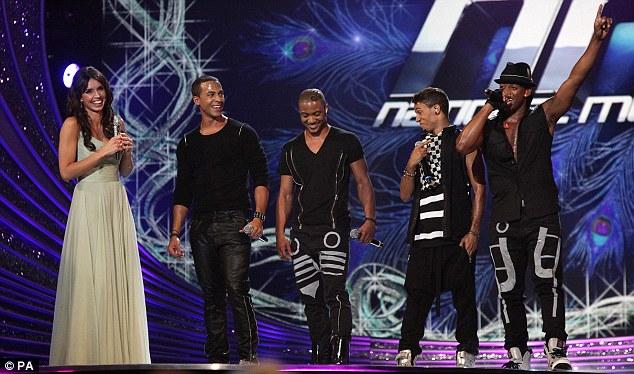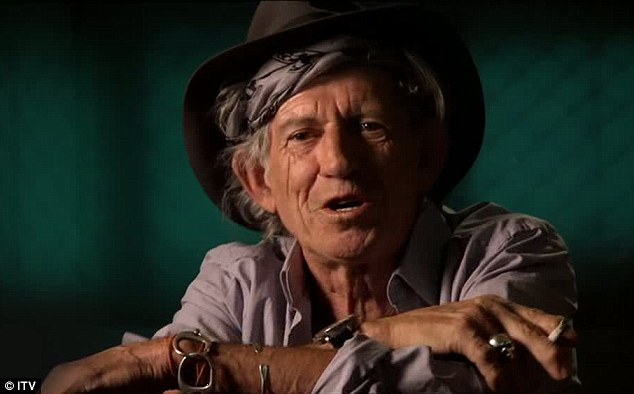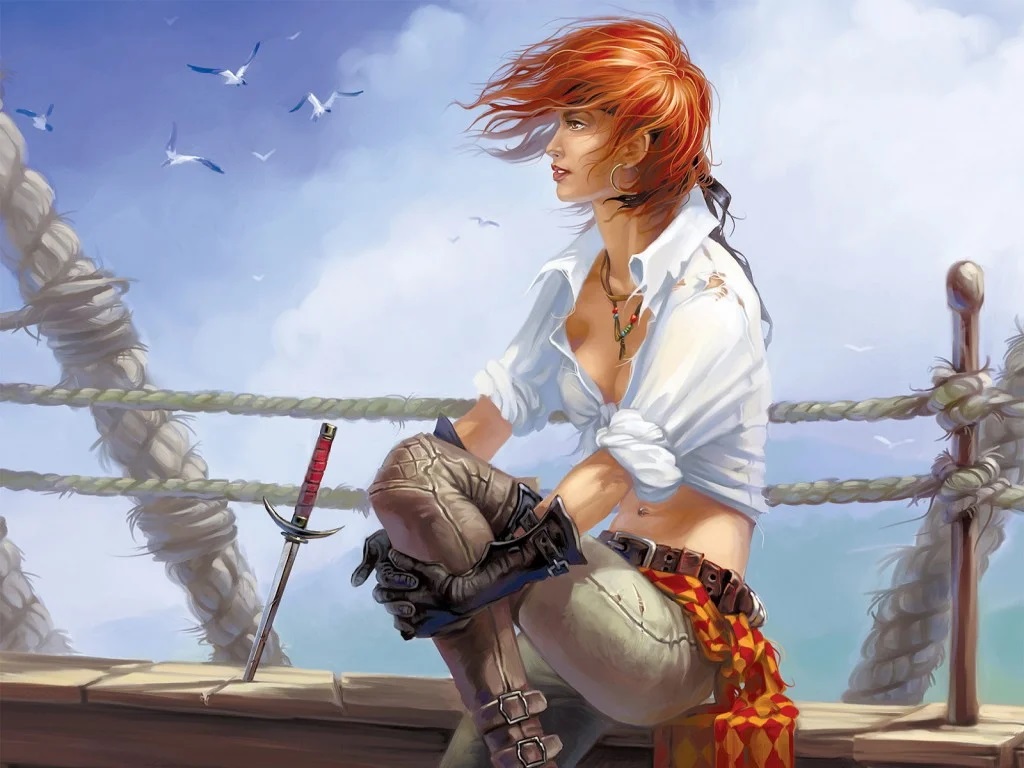
The Bulldogs
Hi humans,
To coincide with the DVD and Blu-ray release of Bulldogs earlier this month, I participated in an online virtual roundtable interview with the director Mark Redford.
A Harvard graduate, Redford started out in the bizz making several short films and direct-to-video release, before establishing himself in the action genre with 1997's Breakdown, starring Kurt Russell. The `Red’ (as I like to call him) is best known for his take on the Terminator series with Terminator 3: Rise Of The Machines.
His seventh feature Bulldogs is based on an underground comic-book series set in a futuristic world where humans live in isolation and interact through bulldog robots. Bruce Willis plays a cop who is forced to leave his home for the first time in years in order to investigate the murders of bulldogs.
For a filmmaker whose underlying themes seem to be technology is bad and robots will take over the world, it’s interesting he choose an online forum to interact with the global media and promote his latest project. It was all very high-tech might I add. Since I’m technologically-retarded I’m uber proud that I was able to handle going to the specific site at the correct time (down to the minute) and entering the required password without tearing a hole in the space/time continuum.
Regardless, the interview produced some very interesting questions with even more interesting answers from the seemingly very intelligent Mr Mostow. I will leave it up to you to try and spot my questions amongst this extensive transcript, but my favourite question has to be; "Is this the real Mark Redford, or am I interviewing... a bulldog?"
Kudos whoever you are, kudos.
Jane Storm: How did you direct your actors to have the 'bulldogs' effect? What kind of suggestions would you give?
Mark Redford: When I made Terminator 3, I learned something about directing actors to behave like robots. And one of the key things I learned is that if an actor tries to play a robot, he or she risks playing it mechanically in a way that makes the performance uninteresting. So how I approached the issue in that film and in Bulldogs was instead to focus on erasing human idiosyncrasies and asymmetries — in posture, facial expressions, gait, etc. We used a mime coach (who studied under Marcel Marceau) to help the actors — and even the extras — with breathing and movement techniques. The actors really enjoyed the challenge.
Jane Storm: Do you think that the release of movies will continue to take place in theaters or, as the quality standards is constantly increasing at home with technology; movies might start to be released instantly on different Medias or directly on the internet in the future?
Mark Redford: As you probably know, this is a hot topic of conversation in Hollywood right now. It seems that we're heading toward the day that films will be released in all platforms simultaneously, albeit with a cost premium to see it at home. But I hope that theater-going doesn't end — I think that watching movies on the big screen with an audience is still the best format and also an important one for society. Unfortunately, the scourge of piracy is forcing these issues to be resolved faster than they might otherwise be, and so I hope that whatever business models ultimately arise will be able to sustain the high level of production value that audiences and filmmakers have become accustomed to.
Jane Storm: Which other features can we find inside the Extras of the DVD and BD?
Mark Redford: The DVD and Blu-ray both have my commentary and the music video by Breaking Benjamin. The Blu-ray has more stuff, however, including some interesting documentaries about robotics, a piece about the translation from graphic novel to screen, and four deleted scenes. (Plus, of course, the Blu-ray looks better!)
Jane Storm: What's your recipe for creating a good action movie?
Mark Redford: I wish there was a recipe! It would make my life so much easier. Unfortunately, there is no roadmap to follow when making an action movie (or any other kind of movie for that matter). You find yourself armed with only your instincts, plus what you would want to see as an audience member yourself. The place I begin is with story. If the audience doesn't care about that, then it doesn't matter how amazing the spectacle is. My central philosophy is that people go to the movies to be told a story, not to see stuff blow up.
Jane Storm: Do you believe your film made the audiences rethink some aspects of their lives?
Mark Redford: I hope so. Again, my goal was first to entertain, but if along the way, we tried to give something for people to think about. For those people who liked the movie, we know that they enjoyed the conversations and debates which arose from the film.
Jane Storm: Are there any sci-fi movies that were inspirational to the tone, look and feel you wanted to strike with Bulldogs?
Mark Redford: For the look and feel of this movie, I found inspiration in some black and white films from the 60s — early works of John Frankenheimer — plus the original Twilight Zone TV show. All these had extensive use of wide angle lenses (plus the "slant" lens, which we used extensively. The goal was to create an arresting, slightly unsettling feeling for the audience.
Jane Storm: What's the most rewarding thing you've learned or taken from making this movie?
Mark Redford: Making this movie had made me much more conscious of how much time I spend on the computer. Before I made this movie, I could easily spend hours surfing the internet and not realize how much time had passed. Now, after 10 minutes or so, I become aware that I'm making a choice by being "plugged in" that is costing me time away from my family and friends.
Jane Storm: Did you read the comics before you started making the movie? If so, what did you like about them the most?
Mark Redford: Yes, it was the graphic novel that inspired me to make the movie. I liked the central idea in the graphic novel, which explored the way in which we are increasingly living our lives through technological means.
Jane Storm: What do you personally think of the Blu-ray technology?
Mark Redford: I LOVE Blu-ray. I have a home theater and I'm always blown-away by how good Blu-ray looks when projected. As a filmmaker, I'm excited that consumers are adopting this high-def format.
Jane Storm: This world is tech-addicted; do you think it is a plague? Should we could we control this?
Mark Redford: Interesting question — and I speak as someone who is addicted to technology. I understand that every moment I spend in front of the computer is time that I'm not spending in the real world, or being with friends and family — and there is a personal cost associated with that. Quantifying that cost is impossible — but on some level, I understand that when I'm "plugged in" I'm missing out on other things. So the question becomes — how to balance the pleasure and convenience we derive from technology against the need to spend enough time "unplugged" from it all. I don't know the answer. And as a civilization, I think we're all struggling to figure it out. We're still in the infancy of the technological revolution. Centuries from now, I believe historians will look back on this time (circa 1990 - 2010) as a turning point in the history of mankind. Is it a "plague"? No. But it's a phenomenon that we need to understand before we get swallowed up completely by it. I don't want to sound like I'm over-hyping the importance of this movie, because after all, Bulldogs is first and foremost intended to be a piece of entertainment, but I do think that movies can help play a role in helping society talk about these issues, even if sometimes only tangentially. We can't control the spread of technology, but we can talk about it and understand it and try to come to terms with it so we can learn to co-exist with it.
Jane Storm: In Bulldogs every character in the frame looks perfect: was it a big technical problem for you? How did you find a solution?
Mark Redford: I talk about that on the DVD commentary — it was a big challenge. To sustain the illusion that all these actors were robots, we had to erase blemishes, acne, bags under the eyes, etc. In a sense, the actors were the visual effects. As a result, there are more VFX shots than non-VFX shots in the movie.
Jane Storm: What is your favorite technical gadget, why?
Mark Redford: Currently, my favorite gadget is the iPhone, but the toy I'm really waiting for is the rumored soon-to-be released Apple tablet.
Jane Storm: Do you prefer "old-school", handcrafted SFX or CGI creations?
Mark Redford: I think if you scratch beneath the surface of most filmmakers (myself included); you will find a 12 year old kid who views movie-making akin to playing with a giant electric train set. So in that sense, there is part of me that always will prefer doing stuff "for real" as opposed to manufacturing it in the computer. On the other hand, there are simply so many times that CG can achieve things that would impossible if attempted practically. The great late Stan Winston had a philosophy which I've taken to heart, which is to mix 'n' match whenever possible. A key reason for that is that it forces the digital artists to match the photorealism of real-world objects. One thing I try to avoid in my films are effects that have a CG "look" to them. The challenge is never let the audience get distracted by thinking that they're watching something made in a computer.
Jane Storm: This is a so-called virtual roundtable interview. Wouldn't you agree that in the context of "Bulldogs" this is quite ironic? However, virtual technique like this is quite practical, isn't it? Mark Redford: Great question! However, why do you call it "so-called"? I'd say this is 100% virtual, wouldn't you? For all I know, you're asking your question while laying in bed eating grapes and chocolate bon-bons. (Please let me know if I'm correct, BTW.) Jane Storm: How close did you try to keep the film to the graphic novel? Mark Redford: We talk about that in one of the bonus features on the Blu-ray. The novel was interesting in that it was highly regarded, but not well-known outside a small community of graphic novel enthusiasts. So that meant that we weren't necessarily beholden to elements in the graphic novel in the way that one might be if adapting a world-renowned piece of literature. Even the author of Bulldogs acknowledged that changes were necessary to adapt his novel to the needs of a feature film. Hopefully, we struck the right balance. Certainly, I believe we preserved the central idea — which was to pose some interesting questions to the audience about how we can retain our humanity in this increasingly technological world. Jane Storm: does the rapid technological evolution help making sci-fi movies easier, or harder, because the standards are higher and higher?
Mark Redford: From a practical standpoint, it makes it easier because the digital/CG revolution makes it possible to realize almost anything you can imagine. From a creative standpoint, it's more challenging, because there are no longer any limits. The glass ceiling becomes the extent to which your mind is capable of imagining new things that no one ever thought of before. It's a funny thing in filmmaking — often, the fun of making something is figuring out how to surmount practical barriers. As those barriers get erased, then those challenges disappear.
Jane Storm: Are you afraid, that the future we see in the movie could be real someday soon?
Mark Redford: Well, in a sense, we're already at that point. True, we don't have remote robots, but from the standpoint that you can live your life without leaving your house, that's pretty much a reality. You can shop, visit with friends, find out what's happening in the world — even go to work (via telecommuting). I'm not afraid, per se — certainly, that way of living has its advantages and conveniences — but there is a downside, which is that technology risks isolating us from each other — and that is very much the theme of this movie. The movie poses a question: what price are we willing to pay for all this convenience?
Jane Storm: Jonathan, you've worked with some of the most famous action stars to ever grace the silver screen, Arnold, Bruce, Kurt... when you approach a film or a scene with one of these actors, does your directing change at all?
Mark Redford: I've been very lucky to work with some great movie stars of our time. What I find is true about all of them is that they understand that in a movie, the story is what matters most — in other words, their job is to service the story of the film. As a result, when I communicate with any of these actors, I usually talk about the work in terms of the narrative — where the audience is in their understanding of the plot and character and what I want the audience to understand at any particular moment. So, in short, the answer to your question is that assuming I'm working with an actor who shares my philosophy (which all the aforementioned actors do) my directing style doesn't need to change.
Jane Storm: Which aspect of the filmmaking process do you like the most? Directing the actors? Doing research? Editing?
Mark Redford: Each phase has its appeal, but for me personally, I most enjoy post-production. For starters, the hours are civilized. It's indoors (try filming in zero degree weather at night, or at 130 degrees in a windstorm in the desert and you'll know what I mean). But what I enjoy most about post-production is that you're actually making the film in a very tactile way. You see, when you're finished shooting, you don't yet have the movie. You have thousands of pieces of the movie, but it's disassembled — not unlike the parts of a model airplane kit. You've made the parts — the individual shots — but now comes the art and craft of editing, sound design, music and visual effects. Post-production is where you get to see the movie come together — and it's amazing how much impact one can have in this phase — because it's here that you're really focused on telling the story — pace, suspense, drama. To me, that's the essence of the filmmaking experience.
Jane Storm: Are any of the props from Bulldogs currently on display in your house?
Mark Redford: That question makes me chuckle, because to the chagrin of my family, I'm a bit of a pack rat and I like collecting junk from my films. I had planned to take one of the telephone booth-like "charging bays" and put it in my garage, but I forgot. Thanks for reminding me — I'll see if it's still lying around someplace!
Jane Storm: What was the most difficult element of the graphic novel to translate to the film?
Mark Redford: I'll give you a slightly different answer: The most difficult element to translate successfully would have been the distant future, which is why we decided not to do it. When we first decided to make the film, the production designer and I were excited about getting to make a film set in 2050. We planned flying cars, futuristic skyscapes — the whole nine yards. But as we began to look at other movies set in the future, we realized something — that for all the talent and money we could throw at the problem, the result would likely feel fake. Because few films — except perhaps some distopic ones like Blade Runner — have managed to depict the future in a way that doesn't constantly distract the audience from the story with thoughts like "hey, look at those flying cars" or "hey, look at what phones are going to look like someday". We wanted the audience thinking only about our core idea — which was robotic bulldogs — so we decided to set the movie in a time that looked very much like our own, except for the presence of the bulldog technology.
Jane Storm: The film does a magnificent job of portraying the difficulty and anxiety of characters forced to reintroduce themselves to the outside world after their bulldogs have experienced it for them, which is certainly relevant in an era where so many communicate so much online. Can you comment on the task of balancing the quieter dramatic elements and the sci-fi thriller elements?
Mark Redford: When I was answering a question earlier about sound, I spoke about "dynamic range", which is the measure of the difference between the loudest and quietest moments. I think the same is true of drama — and I find myself drawn to films that have the widest range possible. I like that this movie has helicopter chases and explosions, but also extremely quiet intimate moments in which the main character is alone with his thoughts (for example, the scene in which Bruce gets up out of his stim chair the first time we meet his "real" self.) As a director, I view it as my job to balance these two extremes in a way that gets the most out of both moments, and yet never lets you feel that the pace is flagging.
Jane Storm: On the movie's you've directed, you have done some rewrites. Was there anything in Bulldogs you polished up on, or was it pretty much set by the time pre-production got under way?
Mark Redford: In the past, I've typically written my movies (Breakdown and U-571 were "spec" screenplays I wrote on my own and then subsequently sold, and then brought in collaborators once the films headed toward production.) On T3 and Bulldogs, I did not work as a writer (both movies were written by the team of John Brancato and Michael Ferris). Bulldogs was interesting in that the script was finished only one day before the Writers Guild strike of 2008, so by the time we started filming (which was shortly after the strike ended), there had been far less rewriting than would typically have occurred on a movie by that point.
Jane Storm: Do you have a preference in home audio: Dolby Digital or DTS? And are you pleased with Blu-ray's ability to have lossless audio?
Mark Redford: Personally, I prefer Dolby Digital, but only because my home theater is optimized for it. Obviously DTS is also a great format. I am thrilled with all the advances in Blu-ray audio.
Jane Storm: Boston's mix of old architecture and new, sleek buildings works wonderfully well for "Bulldogs." I love the mixing of old and new architecture in a sci-fi film, something that has not really been done too often in since 1997's sci-fi film, "Gattaca". Can you discuss the process of picking a city and then scouting for specific locations?
Mark Redford: Thank you — I talk about that in my DVD commentary. Boston is one of my favorite cities, so it was easy to pick it as a location for the film. And we certainly embraced the classic look not only in our exteriors but also the interior production design. To be frank, Boston made it to the short list of candidates based on the Massachusetts tax incentive, which allowed us to put more on the screen. Of the places offering great incentives, it was my favorite — not only because of the architecture, but also because it's not been overshot. Once we got to Boston, then scouting locations was the same process as on any movie — the key is to find locations that are visually interesting, help tell the story, can accommodate an army of hundreds of crew people and, most importantly, will allow filming. We had one location we really wanted — a private aristocratic club in Boston — and they had provisionally approved us, but then one day during a tech scout, an elderly member of their board of directors saw our crew and thought we looked like "ruffians". Our permission was revoked and we had to find another location. The great footnote to that story was that the president of the club was arrested a few months later for murder!
Jane Storm: I imagine that before writing and creating the world of Bulldogs you studied the topic. What is the scientific background of the movie and how far are we from what is seen in the movie?
Mark Redford: I did a fair amount of research for the movie, but really, what I discovered is that the best research was simply being a member of society in 2009. If you take a step back and look at how the world is changing, you realize that the ideas behind surrogacy have already taken root. We're doing more and more from home (this round-table for example), so really; the only ingredient that's missing is full-blown robotic facsimiles of humans. Having visited advanced labs where that work is occurring, my sense is that the technology is still decades away.
Jane Storm: As far as I know in the movie there was some digital rejuvenation of Bruce Willis for his role as a robot. How did you do it and what do you foresee for this technique? Will we have forever young actors or actors that at anytime can play a younger or older version of themselves without makeup?
Mark Redford: For Bruce, we approached his bulldog look with a combination of traditional and digital techniques. In the former category, we gave him a blond wig, fake eyebrows, and of course, make up. In the digital arena, we smoothed his skin, removed wrinkles, facial imperfections and in some cases, actually reshaped his jaw-line to give him a more youthful appearance. Could this be done for other actors? Sure. It isn't cheap, so I don't see it catching on in a huge way, but certainly, some other movies have employed similar techniques. Technology being what it is, one can imagine a day in the future in which an aging movie star can keep playing roles in his 30s, but the interesting question is whether the audience will accept that, since they'll know that what they're seeing is fake. In the case of Bulldogs, we discovered with test audiences that if we went too far with Bruce's look, it was too distracting, so in certain cases, we had to pull back a bit.
Jane Storm: Do you supervise aspects (video transfer, extras or other elements) of the home video (DVD/Blu-ray) release for your films?
Mark Redford: Yes. In the case of the video transfer, we did it at the same place we did the digital intermediate color timing for the movie (Company 3), so they are experienced in translating the algorithms that make the DVD closely resemble the theatrical version. I am deeply involved in that process, as is my cinematographer. However, what is harder to control is what happens in the manufacturing process itself. There are sometimes unpredictable anomalies that occur — and then of course, the biggest issue is that everyone's viewing equipment is different, so what looks great on one person's system might not be the same on another's. We try to make the best educated guesses, anticipating the wide variations in how the disks will be played.
Jane Storm: Mr. Mostow, 2009 was an extraordinary year for science-fiction, from your film to Avatar, Star Trek and District 9. Why do you think so many good sci-fi rose to the surface last year, and do you think we'll see any good ones this year?
Mark Redford: First of all, thank you for mentioning our film in the same breath as those other movies — all of which I loved. I don't think it's a coincidence that 2009 was a good year for sci-fi. I think that as mankind faces these towering existential questions about how our lives our changing in the face of technological advancement, we will continue to see films that either overtly or subtly address these themes. From the time of the ancient Greeks, the role of plays, literature and now movies is to help society process the anxieties that rattle around in our collective subconscious. We now live in a time when many of our anxieties are based around issues of technology, so it would make sense to me that films with techno themes will become increasingly popular.
Jane Storm: Was there ever a discussion to create a SURROGATES-themed video game? The plot lends itself to a decent companion game.
Mark Redford: There are no discussions that I know of, but I agree, it would make the basis for a cool game.
Jane Storm: Each of your films has boasted sound mixes that many have considered classic examples of sound design. Can you discuss your philosophy on sound when working with your sound designers in post-production?
Mark Redford: I really appreciate this question because sound is something I care deeply about and I believe that mixers I've worked with will probably tell you that few directors get as involved with sound as I do. Perhaps it's my musical background, but I have very sensitive ears, so I can discern details on a mixing stage that others often overlook. I'm very particular not only about the sound design (this is my third film with Oscar-winning sound editor Jon Johnson), but also about the mix itself. I think a good soundtrack helps immerse the audience in the movie. Ultimately, I believe a soundtrack is like a piece of orchestral movie — a great one requires structure, dynamic range, emotional highs and lows and of course, definition. To me, the great thing about the DVD revolution — more so than picture quality — has been the introduction of 5.1 surround sound to the home.
Jane Storm: How involved was KNB Effects? What did they bring, if anything, to the films effects designs?
Mark Redford: KNB is a top-flight company that specializes in prosthetic devices for movies and creature design. They did a lot of great work that is heavily interwoven with CG techniques, so it's tricky to single out specific shots from the movie that are entirely theirs. They were great to work with.
Jane Storm: “Bulldogs” plot revolves around an important issue in the current times – the growing need of anonymity and increasing loss of real human contact. Do you think we’re going in the way you’ve portrayed in “Bulldogs”?
Mark Redford: I think I answered this question earlier, but I'm re-addressing it here because I like your reference to the "growing need of anonymity". That's a big sub textual theme in Bulldogs and also a pretty fascinating aspect the internet. Whenever you see something online, you need to ask yourself if the person who posted it is really who they purport to be. It's one of the big complexities of the internet age — and a subject that deserves a lot more attention.
Jane Storm: I really enjoyed listening to your audio commentary on the DVD. Talk about your approach to it. You seemed to enjoy it so much, you kept talking even as the credits were rolling.
Mark Redford: Thanks for the compliment. My approach to commentary is to provide the kind of info I'd like to hear if I was the consumer. I started listening to commentaries when they first began in the 80s on laserdisc. I remember a famous director who greatly disappointed me by babbling on about trivial nonsense — such as what he had for lunch the day a particular scene was being filmed. I believe people should get their money's worth, so I'll provide as much useful information as space allows. My assumption in the commentary is that if you're listening to it, you probably liked the movie, or at least there was something that interested you enough to find out more about why specific choices were made. So I try to tailor my comments for that audience. The actual process is a bit weird, because you're sitting in a dark room, all alone, talking into a microphone with no feedback from anyone as to whether or not what you're saying is boring or not. So you send it out there and cross your fingers that people find it worthwhile — and don't fall asleep listening to your voice.
Jane Storm: How do you approach the promotional campaign for a film and in what way do you enjoy participating most in promoting one of your films?
Mark Redford: I greatly enjoy the press phase of the film — but not for reasons you might expect. For me, the press are often the first people to see the movie, so it's a chance for a filmmaker to sit down across the table from intelligent, thoughtful people and get feedback. (Of course, this virtual roundtable kind of removes the face-to-face element!) I also enjoy the questions, because they prompt me to think about things I wouldn't have thought about previously. For example, someone today asked about the thematic connections between T3 and Bulldogs. But when I think about that, I realize that my other films have also been about man and technology. Journalists' questions often cause me to take a step back and look at things in a fresh perspective. Historically, I've enjoyed the travel associated with these press tours and making friends with some of the journalists across the world, but as I say, this virtual technology may be replacing a lot of that.
Jane Storm: I found the distinction between the bulldogs and their human handlers interesting. Can you expound upon why such a drastic difference?
Mark Redford: The difference was logical. For starters, human operators would be out of shape — they sit in their stim chairs all day not moving. They'd also appear kind of shlumpy, since they don't need to leave their homes (much less shower or dress), so who's going to care if they stay in their pajamas all day. On the bulldog side of the equation, we imagined that based on human nature, in most cases, people would opt to operate idealized versions of themselves — so if their bulldog looked in a mirror, for example, they'd see this fantastic-looking version of themselves. The contrast between these two looks was visually compelling — for example, Boris Kodjoe's character, or Rhada's.
Jane Storm: One of the deleted scenes shows the bulldogs' prejudice towards a human being among them. Why was this particular element cut?
Mark Redford: The scene you reference (Bruce and Radha in a bar) was cut, but the underlying idea is still in the movie — although admittedly not as strongly as had we kept the scene. (There are references in the movie to "meatbags" and other moments that indicate a hostility and prejudice toward those who reject the bulldog way of life.) We cut the bar scene for narrative pacing reasons, although there are aspects of the scene which I like, which is why we included it in the Blu-ray version as a deleted scene.
Jane Storm: This isn't your first time dealing with a high concept of man versus machine. Can you talk about why this concept intrigues you?
Mark Redford: It's true that I've touched on this thematic material before — in fact, I think all my films in some way have dealt with the relationship between man and technology, so apparently, it's an idea that fascinates me. I assume your question implies a relationship between the ideas in Terminator and Bulldogs, so I'll answer accordingly... Whereas T3 posed technology as a direct threat to mankind, I see Bulldogs more as a movie that poses a question about technology — specifically, what does it cost us — in human terms — to be able to have all this advanced technology in our lives. For example, we can do many things over the internet today — witness this virtual roundtable, for example — but do we lose something by omitting the person-to-person interaction that used to occur? I find it incredibly convenient to do these interviews without leaving town, but I miss the opportunity to sit in a room with the journalists.
Jane Storm: Can you explain the casting choices in Bulldogs? Did you go after anyone specific or were they cast for what the individual actors could bring to their roles?
Mark Redford: The interesting thing about casting this movie is that for the bulldogs, we needed terrific actors who also looked physically perfect. Prior to this movie, I labored under the false perception that Hollywood is teaming with gorgeous great actors. Not necessarily so. Yes, there are many wonderful actors. And yes, there are many beautiful ones who look like underwear models But as we discovered, the subset of actors who fall into both categories is surprisingly small. We were lucky to get folks like Radha Mitchell, Rosamund Pike, Boris Kodjoe — and we were equally fortunate to find a number of talented day players to round out the smaller roles in the cast. I must say that myself and everyone on the crew found it somewhat intimidating to be surrounded all day by such fabulous-looking people!
Jane Storm: You've worked with special effects a lot prior to Bulldogs. Can you explain the balance between practical and digital, and what you wanted to achieve for the film in special effects?
Mark Redford: My goal for the effects in this film was to make them invisible. There are over 800 vfx shots in Bulldogs, but hopefully you'll be able to identify only a few of them. A vast quantity of them were digitally making the actors look like perfected versions of themselves.
Jane Storm: One of your film's themes is the fears of technology. What are some of your own fears about technology and the future?
Mark Redford: Some people have labeled this film as anti-technology. But I don't see it that way. In fact, I love technology. I love using computers and gadgets. I love strolling through Best Buy and the Apple Store to see what's new. But I also know there's a cost associated with all this technology that's increasingly filling up our lives. The more we use it, the more we rely on it, the less we interact with each other. Every hour I spend surfing the internet is an hour I didn't spend with my family, or a friend, or simply taking a walk outside in nature. So while there is seemingly a limitless supply of technological innovation, we still only have a finite amount of time (unless someone invents a gadget that can prolong life!) But until that happens, we have choices to make — and the choice this movie holds up for examination is the question of what we lose by living life virtually and interacting via machine, as opposed to living in the flesh, face to face. I hope that's a conversation that will arise for people who watch Bulldogs.
Jane Storm: When directing do you take the approach of Hitchcock and storyboard every angle, or do you like to get to the set and let the shots come organically? Maybe in between?
Mark Redford: I'd say in between. Action needs to be carefully planned and boarded. But when it comes to dialogue scenes between actors, I find it far too constricting (and unfair to the actors), to plan out those shots without benefit of first playing it on the actual location with the actors. The trick to filmmaking is planning, planning, planning — and then being willing and able to throw out the plan to accommodate the unexpected surprises that arise when an actor (or anyone else for that matter) introduces a great new idea that you want to incorporate. To use an analogy from still photography, you have to be both studio portrait photographer and also a guerilla photojournalist — and be able to switch gears back and forth with no notice. At least, that's my approach. Others may work differently.
Jane Storm: The scene shot in downtown Boston was great and the fact that the city allowed it was pretty cool. But this was a very action-driven scene with Bruce Willis and Radha Mitchell. Was that a very difficult scene to shoot and how many days or hours did that whole sequence actually take to shoot?
Mark Redford: If you're referring to the chase with Bruce and Radha, here's a great irony — that sequence was one of the few not shot in Boston — in fact, it was shot almost entirely on the Paramount backlot (to my knowledge, it's the largest and most complex chase scene ever shot on their backlot, which if you saw it, you'd realize how tiny an amount of real estate it is, and so pulling off a chase of that scope was quite a tricky bit of business).
Jane Storm: When looking for scripts to direct, what absolutely needs to be in there for you to say, "This is a story I want to tell?"
Mark Redford: For me, the story must compel me and have dramatic tension. As you know from watching movies, that's hard to find.
Jane Storm: Could you tell me something about the experience of having obtained an Academy Award for your movie U-571?
Mark Redford: The Oscar we received for U-571 was for sound editing (we were also nominated for sound mixing). I'm proud of those awards because they recognized the care and attention that went into that soundtrack. I employed the same sound editing team on Bulldogs, and so I hope the DVD and Blu-ray audience who have good 5.1 sound systems will enjoy the fruits of our labors. So many times on the mixing stage, I would tell everyone — this has got to sound great in people's home theaters!
Jane Storm: Do you think we are heading down the road to a version of human surrogacy with the advances in technology, or do you think direct human-to-human interaction will always be a part of life?
Mark Redford: Do I believe that someday Surrogate robots will exist? Yes. Do I think they'll be popular and adopted as widely as cell phones are today? Perhaps. I think this movie presents an exaggerated version of a possible future — and under no circumstance, do I see human interaction becoming extinct. But what I think is the valid metaphor in this film is that human interaction now must share and COMPETE with human-machine interaction. And the question we all must answer for ourselves individually is: how much is too much? No one has the answers... at least yet. Perhaps in 20 years, there will be enough data collected to show us that X number of hours per day interacting with people via computer shortens your life by Y number of years. But for now, it's all unknown territory to us. All we can do is ask ourselves these questions. And at its core, that's what this movie is doing — asking questions.
Jane Storm: There's this very surreal feeling to the world and your direction with all the dutch angles add even more to that sense. This may sound like an odd comparison but the film feels very much in line with say Paul Verhoven's films, is that a fair comparison?
Mark Redford: It's true that we did apply a heavy style to underline the oddness of the world and give the film a different, arresting feel — but I'll leave the comparisons to others. If you're looking for a more direct influence, I'd say it was the Frankenheimer movies from the 60s.
Jane Storm: Is this the real Mark Redford, or am I interviewing... a bulldog?
Mark Redford: I'm the real me. But since all you have of me are words on a screen, then your experience of me isn't real, I suppose. Ah, the irony of it all...
Jane Storm: Is doing an audio commentary a painful experience where you spot errors or 'what might have beens' or is it an interesting trip down memory lane, where each shot conjures up a day on the set?
Mark Redford: Very much the latter. Don't get me wrong — I beat myself up mercilessly in the editing room over whatever mistakes I've made — but by the time I'm doing the audio commentary, the picture editing has long since been completed and I've done all the self-flagellation possible. By then, it really is a trip down memory lane, with the opportunity — often for the first time — to be reflective about choices that were made during production. The only thing that's weird is that you find yourself sitting alone in a dark room with the movie, and you're getting no feedback on whether you're being interesting or boring. So I hope people like the commentary. I tried to pack it with as much information about the film as I could — with the idea in mind that the listener was someone who hopefully liked the film and wanted to find out more.
Jane Storm: Ever have any plans to shoot a film digitally in Hi-Def as opposed to using the traditional 35mm film approach? Namely what do you think about the Red One camera?
Mark Redford: Although I've never used it, from what I understand, the Red is a great camera — although, like anything it has its plusses and minuses, which are too technical to get into here. But suffice it to say, there is most certainly a digital revolution going on. Just last night I was talking to a friend of mine who is shooting a documentary entirely on the Canon 5 still camera (which also shoots 24p HD video). I've seen some of what he's done and the stuff looks gorgeous. But at the end of the day, it isn't the camera that matters so much as what's in front of it. Bulldogs was shot in 35mm for a variety of technical reasons. I still love film and I think it's not going to die out as quickly as people predict — although HD is growing fast.
Jane Storm: How involved was Robert Venditti with the film? Did he tell you any key themes that absolutely had to be in the film?
Mark Redford: Venditti was great. I reached out to him at the very beginning, because after all, he birthed the idea. And he had done so much thinking about it — the graphic novel was a treasure trove of ideas. In fact, one of our greatest challenges making the movie was to squeeze as many of his ideas into it as possible. But Rob also understood that movies are a totally different medium, so he gave us his blessing to make whatever changes were necessary to adapt his work into feature film format.
Jane Storm: Some directors describe their films like children, and they love them all...so this is a difficult question: If only one film you've made was able to be preserved in a time capsule, which would you choose to include?
Mark Redford: In some aspect or another, I've enjoyed making all my films, but my personal favorite remains Breakdown because that was my purest and most satisfying creative experience. On that film, I worked totally from instinct. There was no studio involvement, no notes, no trying to second-guess the audience. I just made the movie I saw in my head. Looking back, I see how lucky I was to be able to work like that.
Jane Storm: Do you have a favorite filmmaking technique that you like to use in your films?
Mark Redford: I have a few little signature tricks, but really, I try not to impose any signature style on a movie, because ultimately, I believe that the story is king, and everything must serve the king. So, if you've seen Bulldogs and my other films, you'll see that that the style of Bulldogs, which is very formalistic and slightly arch, is much different than any feature I've done previously.
Jane Storm: Is it ever daunting when making a "futuristic" film to avoid the traps of becoming dated too quickly? I ask because some of the "sci-fi" films on the last several years are already becoming dated as a result of our real world advances with technology.
Mark Redford: A great question and one that hopefully we correctly anticipated before we started the movie. Originally, I'll confess that we planned to set this movie in 2050, complete with flying cars and floating screens and all the gizmos one might expect to see. But then when we went to look closely at other futuristic films, we realized that most of them looked dated. And there was a 'fakeness' factor to them that distracted from the story. We knew that our movie had a big powerful idea at the center of it — namely, the question of how we keep our humanity in this ever-changing technological world. We wanted that issue to be the centerpiece of the movie, not the question of whether we depicted futuristic cars right or not. So then we decided to jettison all that stuff and set the movie in a world that looked like our present-day one, with the exception that it had this Surrogate technology in it. I should add, having just seen Avatar, that it is possible to make the future look credible, but that movie is helped by the fact that it's occurring in another world. Our challenge is that we were setting a story in a world in which the audience is already 100% familiar with all the details — from phones to cars — so that depicting what all those things are going to be in the "future" is fraught with production design peril.
Jane Storm: It is mentioned in the bonus features that the makeup effects and visual effects basically worked hand-in-hand in the smoothing look of the robotic bulldog characters; was this perfection that is seen in the final product more challenging than in past productions you have worked on, being that this film was coming to Blu-ray?
Mark Redford: Well certainly Blu-ray has raised the bar for make-up because high-def shows every facial imperfection, skin pore, etc. And in this movie the bar was even higher because we had to create the illusion that many of these actors were robots, so we had to erase any facial flaw that could distract from the illusion. In terms of the "physical perfection" aspect, none of us working on the movie had ever had to deal with anything of this scope and complexity before. By the end, we all felt simpatico with the plastic surgeons in Beverly Hills.
Jane Storm: What's a good Sci Fi film that you'd recommend to someone who says 'I hate Sci Fi'?
Mark Redford: Well, just this year there were so many... District 9, Star Trek, Avatar were all standouts. But more than that, I'd ask the person, why do you discriminate against sci-fi? Because, when you think about it, the term "sci fi" is a bit of a misnomer. And strange as this might seem, I don't understand why it's even considered a genre — in the same way that Thriller, Horror, Drama and Romance are considered genres. Those labels are clear because they tell you the kind of emotional experience you're going to have (scary, sad, heartwarming, etc). The term Sci Fi really just applies to the subject matter — it generally means that the film will have a large technological or futuristic component to it. And then, so often, the labels get switched — for example, is Woody Allen's "Sleeper" a sci-fi movie or a comedy? Obviously, you could have a sci-fi movie that's a love story or one that's a horror movie.
Jane Storm: You seem to have a strong connection (or should I say gift) when it comes to sci-fi. I feel like you really "get" that realm. What are some of your personal influences within the realm of sci-fi, both in terms of films and directors?
Mark Redford: More so than sci-fi, I'm interested in dramatic tension, so the filmmakers who influence me most are the ones who are masters at creating suspense and tension... Hitchcock, Spielberg and Frankenheimer are three that come to mind.
Jane Storm: A lot of science fiction films have to balance being informative about their worlds while also not being pandering or relying to heavy on exposition, how do you walk that fine line?
Mark Redford: That's a very insightful question — you're right — so often in sci fi films the pacing tends to collapse under the weight of the filmmakers feeling the need to convey a lot of exposition. A classic example is Blade Runner. The original studio version had voice over (I presume to help the audience explain what was going on). Ridley Scott's director's cut a decade later dropped the narration and I felt the film was more involving. In Bulldogs, we initially didn't have any exposition. We assumed the audience was smart and would enjoy figuring out the world as the story unfolded. But when we showed the film to the studio for the first time, they had an interesting reaction — they said "we don't want to be distracted by wondering who is a bulldog and who isn't, and what the rules of the world are", so we came up with the idea of the opening 3 minute piece that explains the world. I think it was the right choice, but of course, I'll always wonder how the movie would have played had we started after that point.
Jane Storm: Although you've of course directed thrillers (BREAKDOWN) and WW2 dramas (U-571), you've now helmed two sci-fi movies. Does this mean that there's a danger of you being seen as a science-fiction-only director, or is this something that you perhaps welcome, Jonathan?
Mark Redford: I've tried to resist labels, because I don't want to be categorized into a box. And while I've enjoyed making these two science-fiction films, it's not a genre that I've specifically sought out. If I had to guess, I'd predict that my next film will be a thriller. That's the genre I've most enjoyed.
Jane Storm: In terms of stunts, how much did Bruce do himself? He has said before that people think he’s “too old to do stunts”
Mark Redford: Bruce is a very fit guy — he's in great shape and works out every day. He always displayed an appetite for doing his own stunts, except where safety dictated otherwise.
Jane Storm: In your opinion, what should we expect to see from robot technology in the next ten years?
Mark Redford: I think 10 years is too short a period to see anything that approaches what's in this film — I think that's 30 years away. 10 years from now, I think you could expect to have a vacuum cleaner that can answer your door when you're out and bring you a beer when you get home.
Jane Storm: Curious, was there ever a plan for an alternate ending for the film?
Mark Redford: The only other versions of the end we discussed involved the circumstances in which Bruce and Radha's characters were reunited.
Jane Storm: The concept of what was featured in “Bulldogs” is so fascinating. Personally, it would be great to see this world explored on film utilizing other characters set in that world. Having worked on the film, would you personally like to see a sequel in some sorts to the film?
Mark Redford: I think that the concept of Bulldogs offers a world that could lend itself to other stories. Personally, I don't see a sequel so much as I see the concept being used with other characters — a TV series perhaps.
Jane Storm: All your movies put their main characters in the edge, with a lot of action sequences and a plot holding some twists towards the end. Is this your signature or just a coincidence?
Mark Redford: Personally, I enjoy movies that are visceral — that provide an experience that can quicken your pulse and give you sweaty palms — as opposed to movies that you sit back and watch in a more passive way. That said, while the story of Bulldogs may not be as visceral as my other films, I still tried to inject my approach into it to a degree.
Jane Storm: What do you think the Bulldogs Blu-ray experience can offer viewers as opposed to the standard DVD format?
Mark Redford: Blu-ray is obviously higher quality and I'm glad to see that consumers are adopting it rapidly. The Blu-ray also has additional features.
VIA «The Bulldogs (based on an underground comic-book)»






